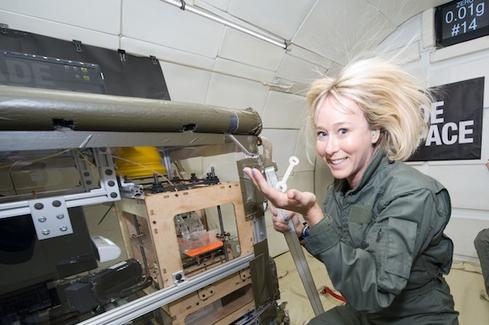US Unveils Super-Accurate Atomic Clock
NIST's new F2 cesium fountain clock, three times more accurate than the previous clock, improves reliability for communications networks and positioning systems that depend on precise timing.


NASA Explores 3D Printing: 5 Cool Projects
NASA Explores 3D Printing: 5 Cool Projects (Click image for larger view and slideshow.)
Communications networks and positioning systems that require precise timing now have a new standard of precision to draw on: A new atomic clock that is three times more accurate than the previous standard for US time and frequency.
The National Institute of Standards and Technology's F2 cesium fountain clock, which officially went into service at NIST's Boulder, Colo., facility on April 3, is accurate to within one 10-trillionth of a second a day -- or about one second every 300 million years -- and is the most accurate official clock in the world. It is about three times more accurate than the previous US standard, the NIST-F1.
The improved accuracy is important because timing underlies the electronic infrastructures on which the modern world depends. Packet-switched networks and power grids require time measurements with an accuracy of within one millionth of a second a day, and the Global Positioning System requires an accuracy of one billionth of a second a day. Increasing the accuracy of the primary timing source improves the accuracy on networks as the signals move into the real world.
[NIST's standards for information assurance and security are gaining wider acceptance. Read Defense Department Adopts NIST Security Standards.]
"You are always going to lose some of the accuracy [in delivering time to cell sites and network servers]," said Thomas O'Brian, chief of NIST's Time and Frequency Division.
Improved timekeeping leads to technological innovation, according to Steven Jefferts, lead designer of NIST-F2. "If we've learned anything in the last 60 years of building atomic clocks, we've learned that every time we build a better clock, somebody comes up with a use for it that you couldn't have foreseen," Jefferts said.
Packet-switched networks such as the Internet now carry everything from old-style data to broadcast TV and streaming audio and video. This requires services such as Time Division Multiplexing to move data at a lower cost-per-bit than is possible on traditional circuit-switched networks. Large networks use primary reference clocks to provide timing, and timing is distributed hierarchically from the clocks to first-tier nodes on the network, and then from node to node.
Accuracy degrades as timing signals move through the network. The Network Time Protocol delivers accuracy to 1 or 2 milliseconds over a LAN and 1 to 20 milliseconds over a WAN. This puts a premium on the accuracy of the official standard, which in the US now is NIST-F2.
Strictly speaking, NIST-F2 is not a clock but a device to accurately measure a second. A second now is defined by the frequency of a cession atom, which vibrates 9,192,631,770 times a second. The measurements of NIST-F1 and now NIST-F2 are used to calibrate official NIST clocks that contribute to Coordinated Universal Time (UTC).
The International Bureau of Weights and Measures, headquartered in France, determines UTC using data contributed by about 60 timing laboratories around the world. NIST clocks contribute about 10% of these measurements, and US Naval Observatory clocks contribute about one third of the measurements.
NIST-F1, which operates at a temperature of about 80 degrees Fahrenheit, is reaching the limits of its accuracy due to errors that creep in because of "blackbody radiation." By lowering the operating temperature of NIST-F2 by about 300 degrees, to just above absolute zero, these errors are 100 times smaller, Jefferts said, making the new standard substantially more accurate.
The cesium atom has been used as the standard for defining the second since 1967, and it is probably nearing the limits of its accuracy, according to Jefferts. "We'll make NIST-F2 a little bit better," he said, but he does not expect to see another threefold improvement. The next official standard will probably be defined by optical clocks, which divide the second orders of magnitude more finely than cesium clocks.
Solid state alone can't solve your volume and performance problem. Think scale-out, virtualization, and cloud. Find out more about the 2014 State of Enterprise Storage Survey results in the new issue of InformationWeek Tech Digest.
About the Author(s)
You May Also Like







